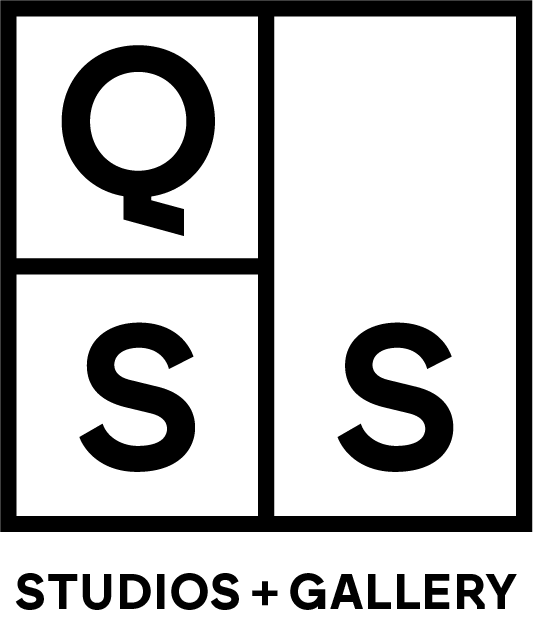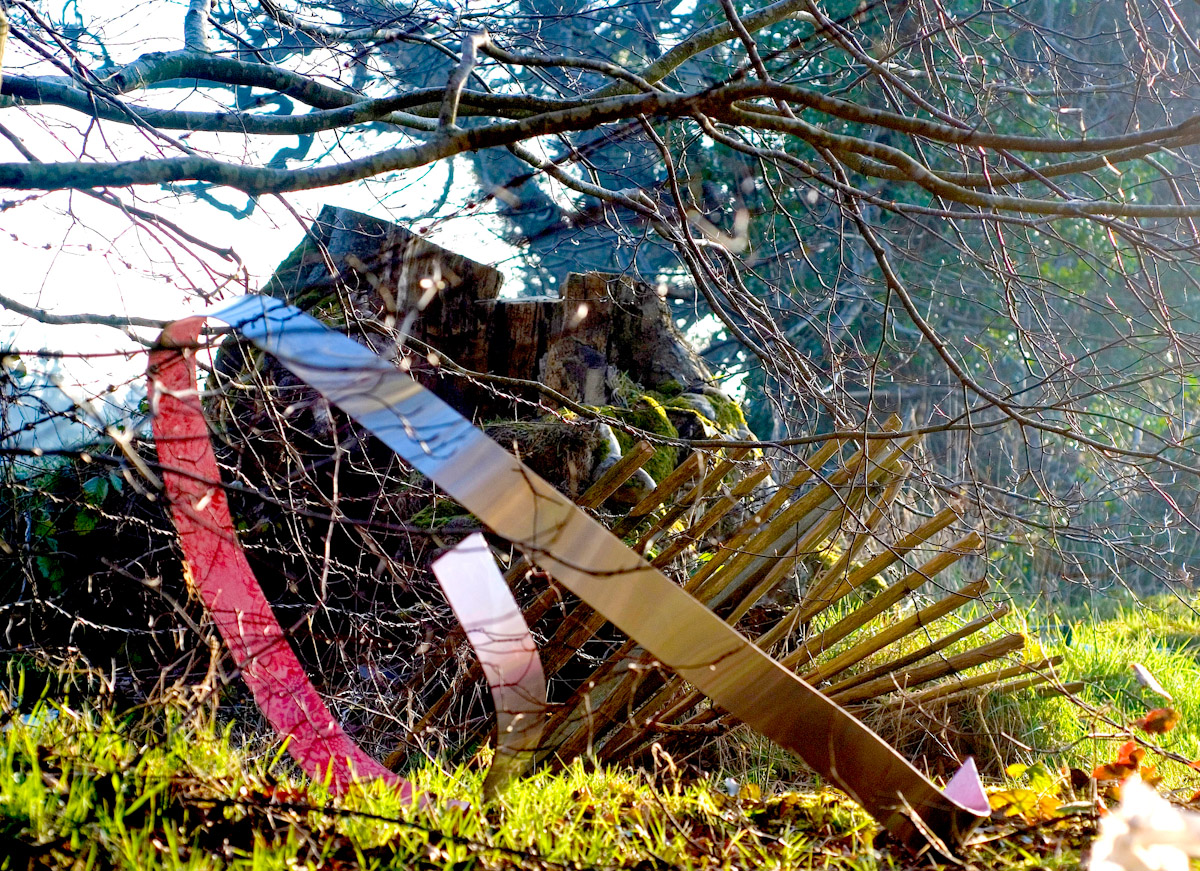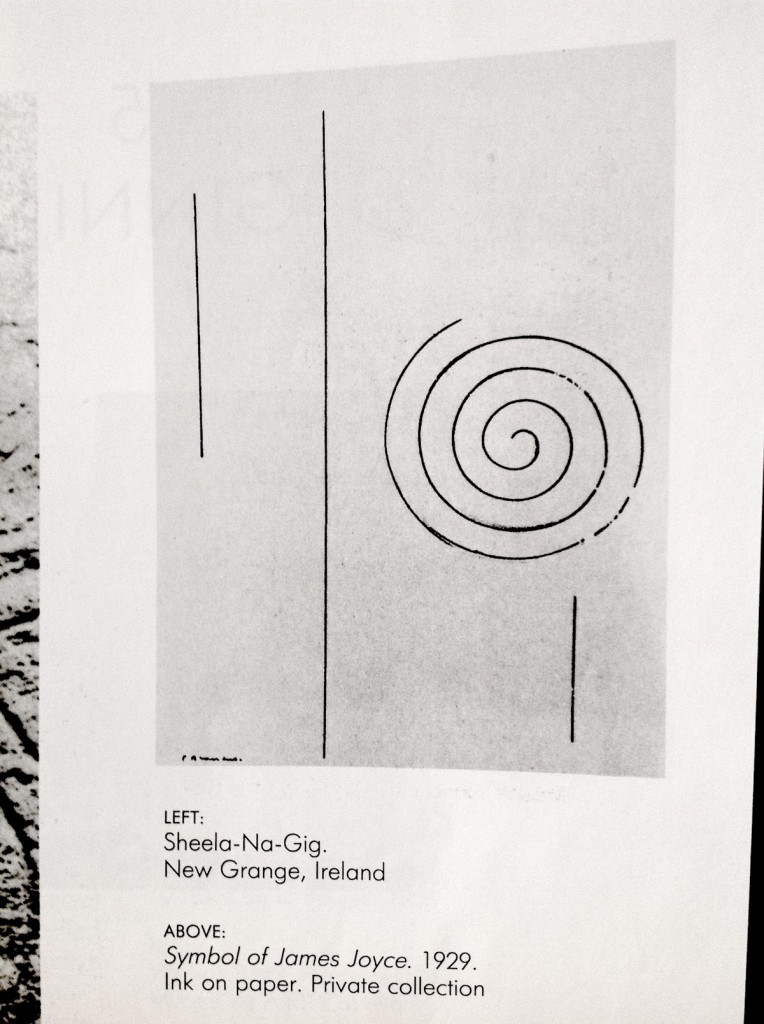Article by Slavka Sverakova.
Sinead McKeever (MFA, 2008, University of Ulster) is based at Queen Street Studios, Belfast, in the new spaces at Bedford Street. She described her art practice thus:
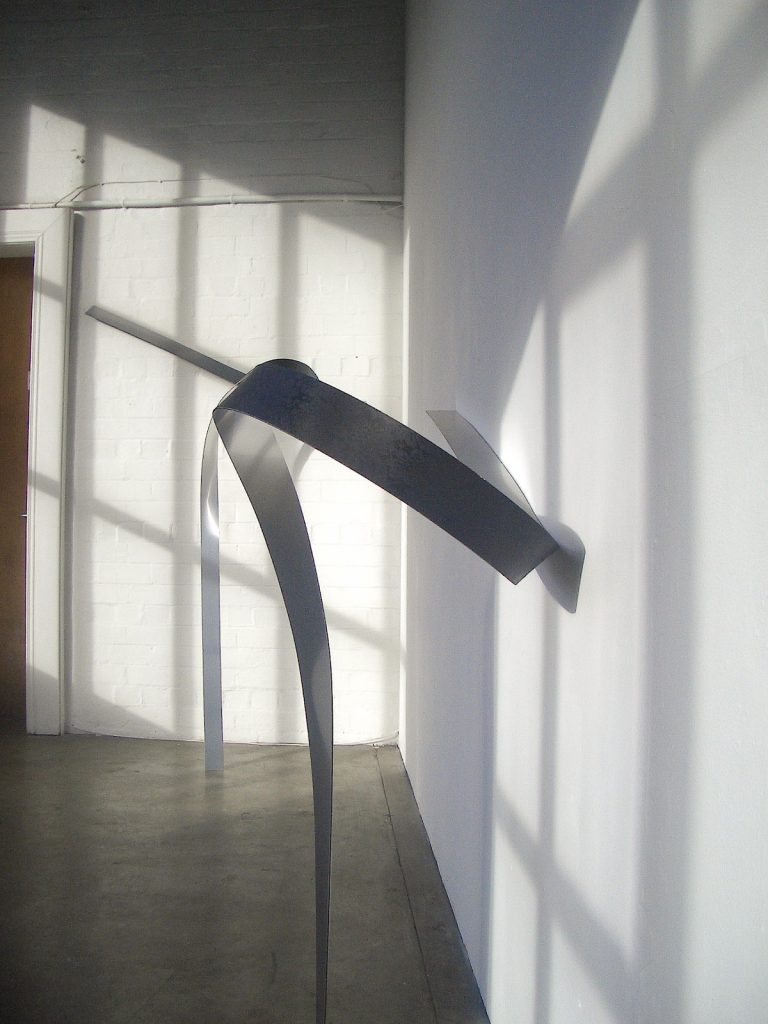
My practice is process lead; through experimentation and rigorous editing I explore the possibilities of found industrial and domestic materials. Ockhams’s Razor, the principle of parsimony (“ Plurality should not be posited without necessity”) informs my way of thinking. I integrate the Fluxus idea of the simple gesture as part of the process of creating. Minimalist sensibilities are reinterpreted and a more organic, ornamental response is incorporated.
Artworks are created in situ, psychological tensions are introduced to heighten the senses. By engaging directly with the physical space, both ocular and haptic vie for control. In an ongoing exploration of spatial occupation and application, layers of histories are at once revealed and concealed, these actions reinforce the delicacy and ephemeral nature of the work. The questioning of hierarchical systems of measuring and knowledge are filtered and constructed. Fragmented beginnings and endings are volunteered so that perception and interpretation are open ended. Diagrams, solutions, text and visual notes suggest possible communication that evolve and change. Concepts of educational processes are implied and types of knowledge are responded to in a quotidian manner. Revelation and concealment interrupt these interfaces. (Quoted from Artist’s statement)
When tested against her sculpture three ideas appear dominant: economy of means, the delicate engagement with communicative layers, and connection with older art (history layers).
In her Studio and gallery series there is a study related to Constantin Brancusi.
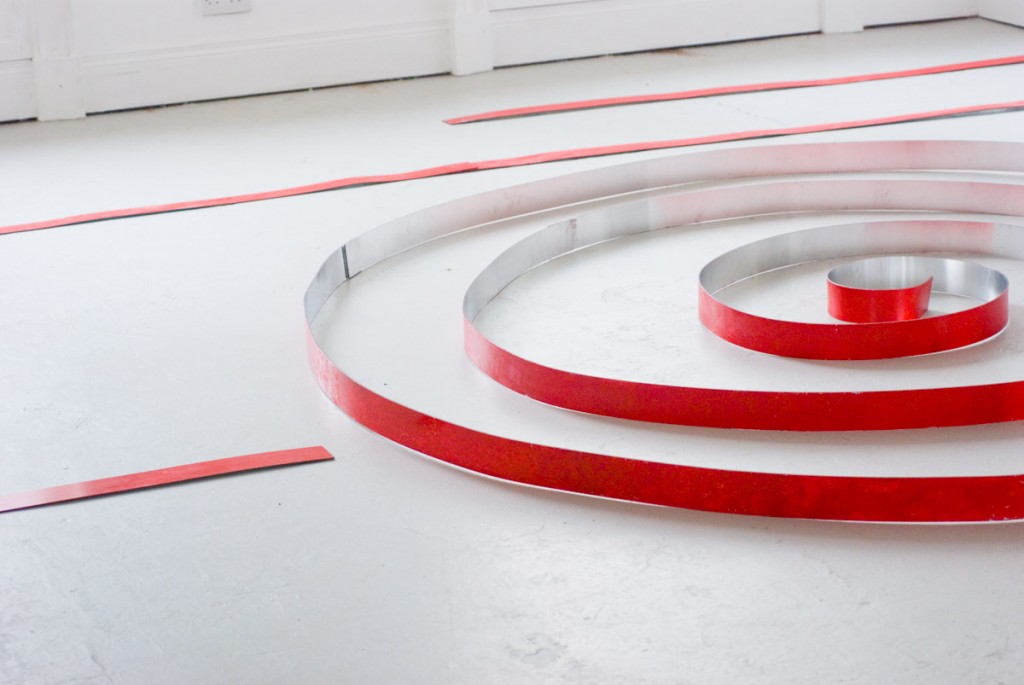
Switching the words “symbol”(Brancusi) and “portrait”(McKeever) is indicative of the convolution of something describing a phenomena for something that stand for it. After all, a portrait stands for the real face. McKeever also benefited from Brancusi’s minimalism (long before the movement so named) directed onto the issue of a pedestal. Carl Andre and other Minimalist placed relief or sculpted form directly on the floor – a strategy quickly grown into a norm, through exploration of its capacity to embrace diverse materials. McKeever’s choice of material (found and therefore accessible) allows her sculpture not only to settle on the horizontal floor, where it obeys her concern with the economy of means, but can adopt to vertical, stable or not, found supports, like a wall, or a branch of a tree.
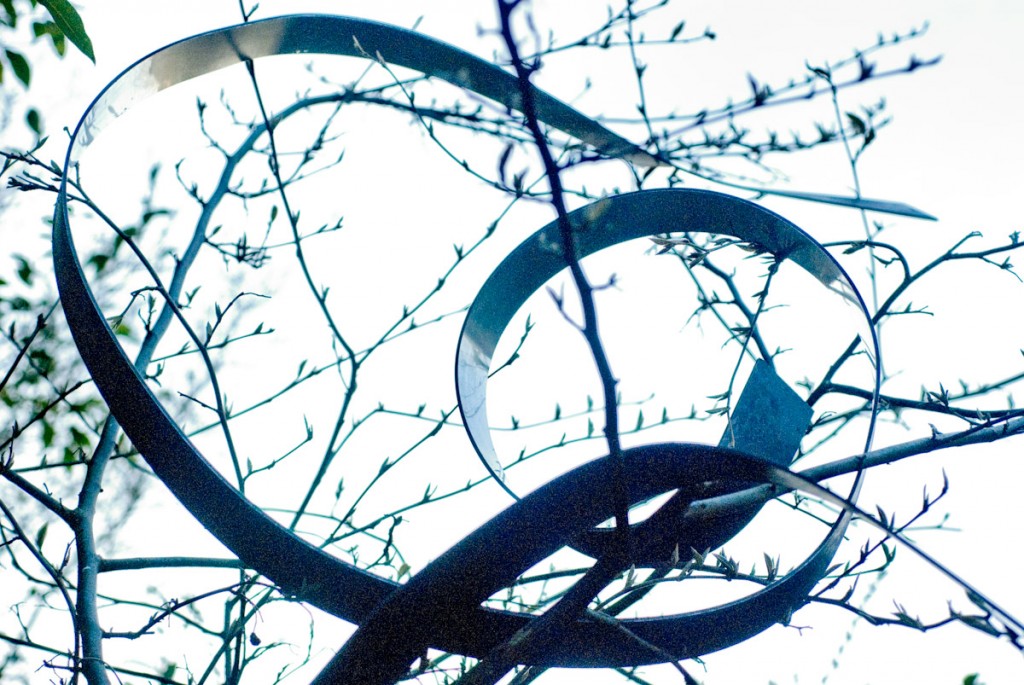
The above Notation 12 is one of six studies for outdoor sculpture. Why is this significant? The public art commissions in Belfast have a checkered profile: some are just bad sculptures, others relate to inadequate ideas, others still struggle to be anything more than spiritless decoration. There are magnificently good sculptures by former students of the University of Ulster (earlier the Polytechnic) e.g. John Kindness, Brian Connolly, Viv Burnside and Louise Walsh. McKeever’s studies continue in this strong tradition. Her starting point for each new work is, what Raphael Santi called “una certa idea”, a parallel between 16th C and Conceptual art. In his brilliant essay “Science and Visual Art” J S Ackermann pointed out the “disturbed and unstable psychology of their time”( meaning the 16th C), an observation applicable to the wave of political and economic crisis at present.
McKeever enhances her freedom to dip in the history of art also in her emphasis on process (1970s) and on poetic power. By the 1960s the poetic power of the “drawing in the air” by David Smith has not been surpassed yet. Shaking the rigid spatial concept of sculpture by gradual negation of its inner space (Carl Andre: Equivalent,, 1966), divorcing sculpture’s meaning from a direct reference to an a priori experience (Riley’s Pond, 1973), both emancipated open form on terms very different from mimesis. In June 1978 I saw an exhibition at the Staedel Art Institut at Frankfurt, titled “Zum beispiel Skulptur” = “For example sculpture”. Beuys, Ufan, Rausch, Rueckriem, Spagnulo and Serra offered incentives to free development of imagination by focusing on the qualities of material, mass and scale. McKeever, perhaps, not knowingly, revives both the respect for the creative power of material and emphasis on scale as power to eliminate limits embodied in a mass. The scale allows me to grasp the sculpture without moving around.
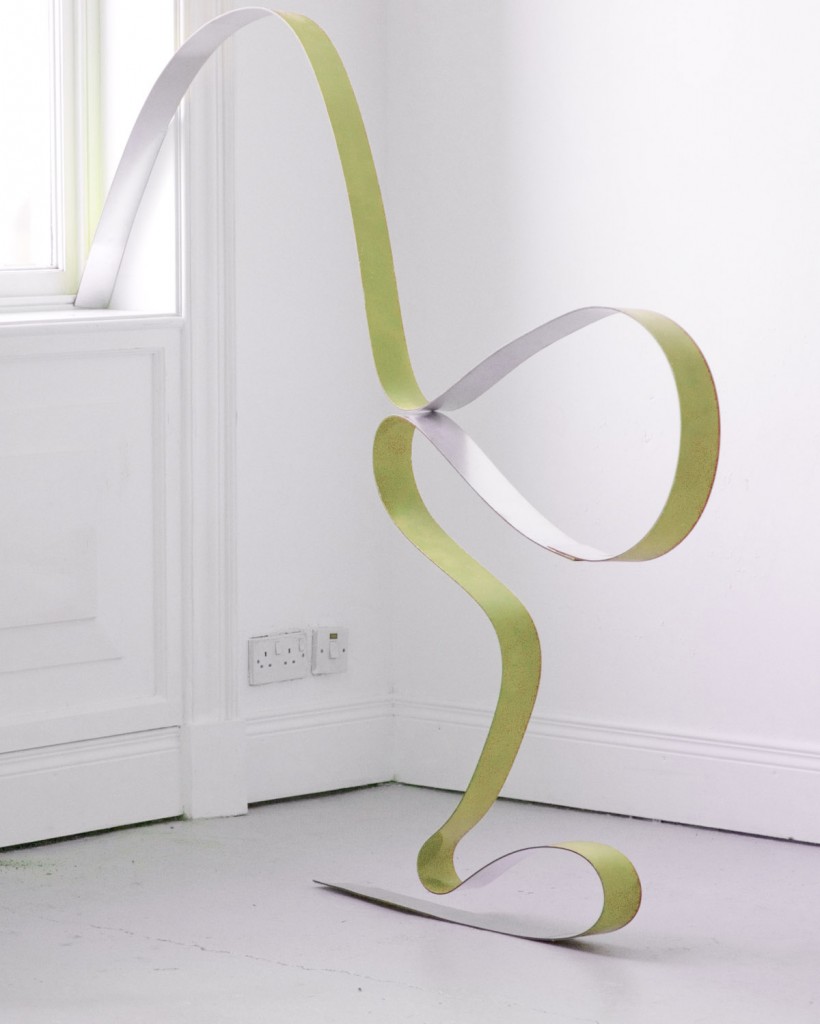
However, with another work, with a change of my viewing point the sculpture appears to have changed to a new constellation of its (static) elements.
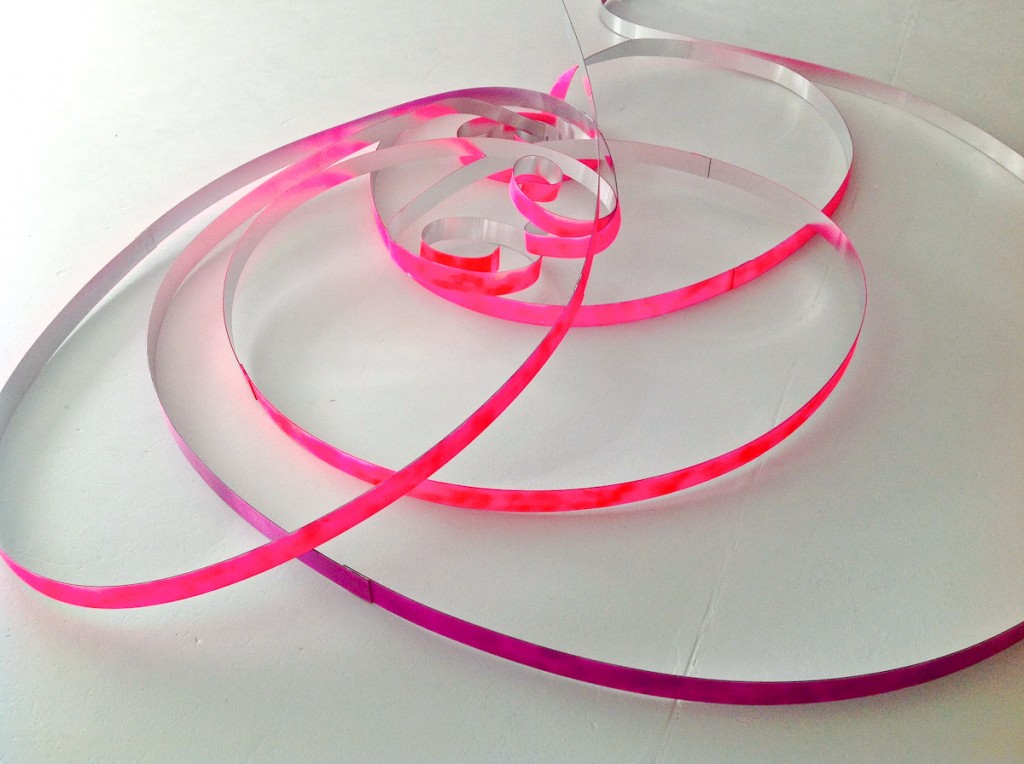
This one seen from an adjacent space – at an angle and cut by the corner appears heavy and deprived of its centre.
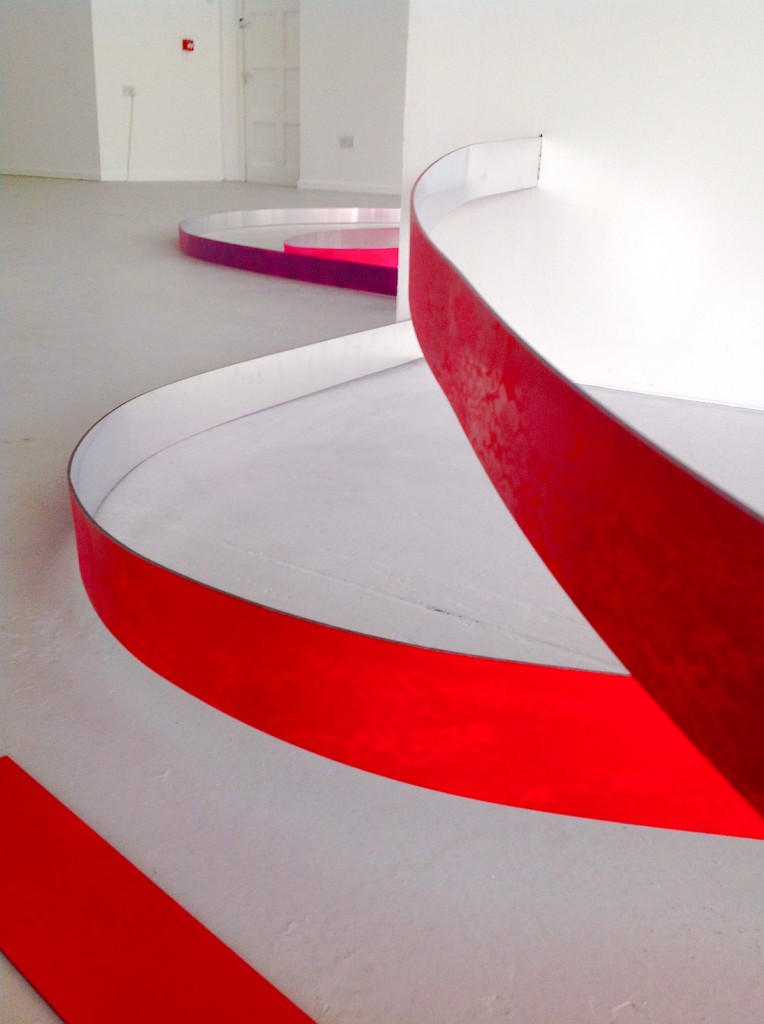
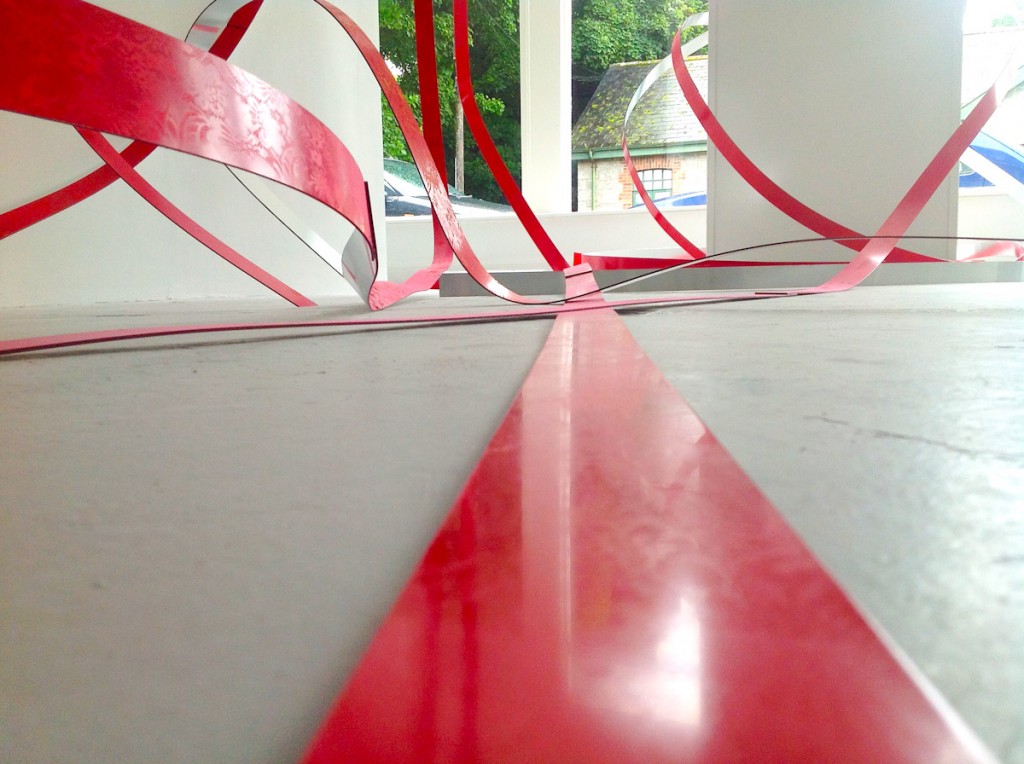
The series enjoyed the freedom of scale, climbing up, sprawling down, reminiscing on Carl Andre’s saying that for him the best sculpture is a road.
A salient point of comparison: presentation of non -directional spatial continuum. Quite a strange task in the world used to directions, entrances, bridges, roads, interiors and exteriors. This sculpture shocks and delights in equal measure, its open form caresses the capacity of the material to bend like in calligraphy, its capacity to transform itself from an abandoned cut offs to a brand new existence. McKeever cherishes the paradox, caresses it with courage. Like R. Serra, she faces a problem of balance – the impression of playful precarious balance is disquieting – and this in turn stimulates observation of the form that awakened that uncertainty. Unlike Serra, she introduces a separation between the viewing and being under those ribbons, as well as signalling that they are not heavy. The material’s pliability endangers their stability – without destroying the balance. Moreover, it stands as an immediate presence, not a representation of something, on the same level as the viewer. It operates several meanings, avoiding a definitive statement. It is like a cluster of tones in a musical score.
In that Frankfurt exhibition, this similarity between sculpture and music appeared to be understood by Giuseppe Spagnulo.
Having mentioned predecessors to an emerging sculptor some may interpret it as turning her into a secondary follower. Nothing is further from the truth. None of her work looks like those of artists mentioned. I am not even in a possession of evidence that she knows the work I referred to. It is the sharing of ideas central to contemporary sculpture that my comparisons mapped. The sadness that lesser sculpture is being commissioned while her gift is ignored gave inspiration to this essay.
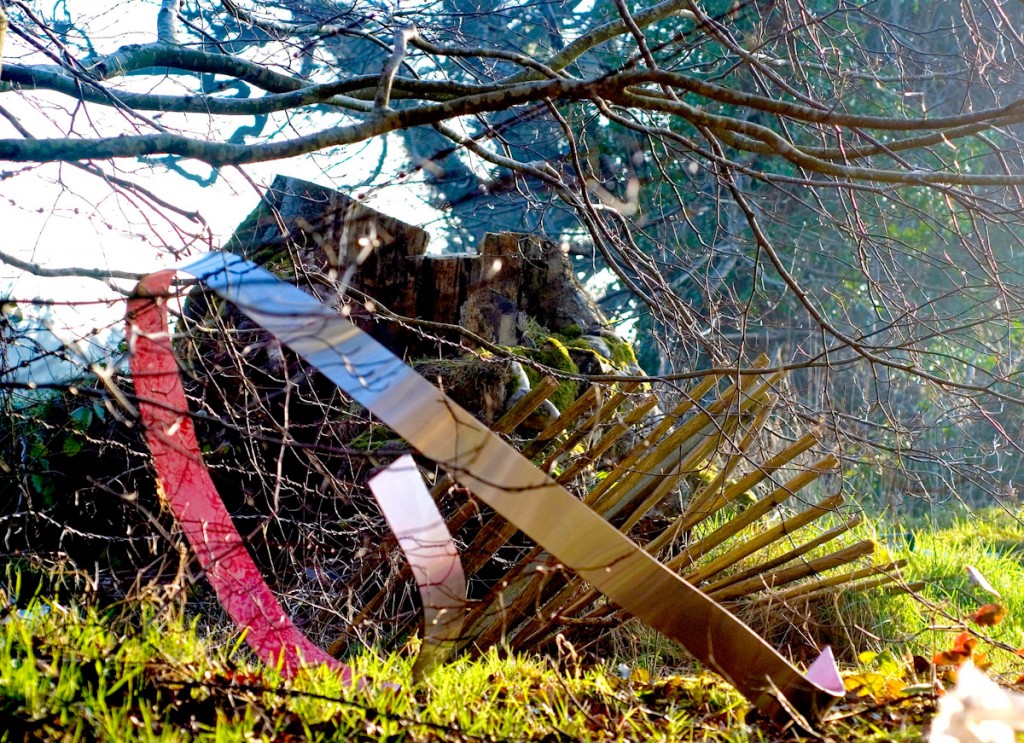
Images: courtesy Sinead McKeever
